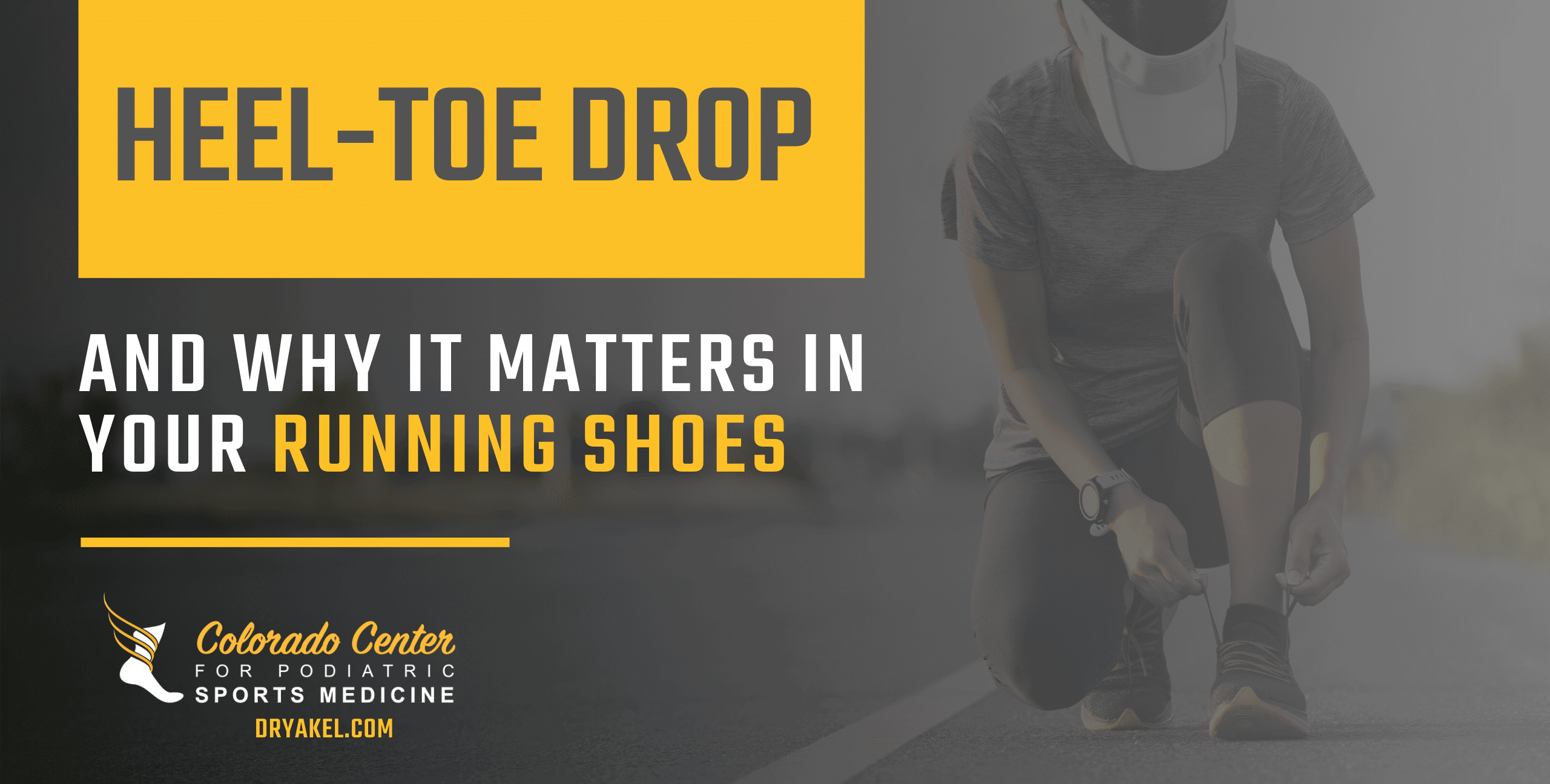https://dryakel.com/blog/heel-toe-in-your-running-shoes/
When it comes to running shoes, however, a custom design is typically not necessary. A perfectly suitable type of shoe for your feet is probably out there among the many configurations available—you just have to find it!
The better you understand the differences between various types of running shoes, the better informed you will be when making these choices. One area that’s worth focusing on is the heel-toe drop—which might not even appear on some runners’ radars when selecting a shoe.
Knowing more about heel-toe drop can increase your arsenal of knowledge while looking for the right running shoes, and also help you stay alert to when some of your current pairs should get replaced.

WHAT IS HEEL-TOE DROP?
Heel-toe drop (sometimes shortened to just “drop”) is a comparison of the amount of cushioning beneath your heels and the amount of cushioning beneath your toes.
This measurement looks at the difference between the two thicknesses, and not the specific thickness of each area. For example, a shoe with a heel thickness of 10 mm and a toe thickness of 4 mm would have the same heel-toe drop as a shoe with a heel thickness of 20mm and a toe thickness of 14 mm. The heel-toe drop would be 6 mm in both cases, even if the second shoe is more cushioned overall.
The higher the heel-toe drop, the steeper the slope that exists from the heel to the toes. A shoe with no heel-toe drop sets the heel and toes on a flat plane.
A “standard” running shoe tends to have a heel-toe drop of around 10 mm.
WHAT HEEL-TOE DROP MEANS FOR YOUR FEET
Different runners have different feet and different styles of running, so there is no one drop number that is perfect for everyone across the board.
You might hear some people state that having zero heel-toe drop is superior, since it is the most “natural” way to run. It might be best for some people, but it simply is not the case for a great many others. A lot of this is just hype for natural, minimalist running shoe styles.
So what should you be thinking about when you consider the drop in a running shoe? One of the big factors is how your feet strike the ground as you run.
Most people hit the ground with their heel first. Shoes with a higher heel-toe drop focus more on this impact, providing more cushioning to the heel and encouraging shifting of the impact load to the hips and knees. If you strike heavily with the heel, a high heel-toe drop is likely a good choice for you.
The lower the heel-toe drop, the more it will encourage striking the ground with the middle or front of the foot first. A midfoot strike may have a lower overall impact than a heel strike, but where that stress is created is also important to understand.
A lower drop often places more impact force on the foot and ankle, instead of the hips and knees. It can also place more stress on the Achilles tendon.

WHAT LEVEL OF DROP IS BEST FOR ME?
There are multiple factors to consider when choosing foot drop, but we can create some general tips using the information above.
You might want a higher heel-toe drop if:
- You tend to strike the ground with your heel first.
- You have had a history of foot or ankle pain or injuries.
- You have a history of Achilles tendinitis, tight calf muscles, or other factors implying you should place less stress on your Achilles.
You might want a lower heel-toe drop if:
- You tend to strike the ground with the middle or front of your foot first.
- You have had trouble with knee or hip pain.
Ultimately, the best indication of how much drop is best is experience. If you have been running for a while, you already have some!
Learn what the starting heel-toe drop of your current running shoe model is. A Google search for the model name and number can often help here. Also, keep in mind that a shoe’s starting drop level when brand new will likely decrease over time due to natural wear on the heel, especially if that is where you strike.
Consider how your feet, legs, knees, and hips have felt during the course of your “career” with this shoe, and let that help you determine whether you might want to try a higher or lower drop value.
If you do want to shift to a significantly higher or lower drop, try to make it a gradual change over several pairs of shoes and not an immediate switch. Too much of a change all at once could increase your risk of pain and injury. Then you will be looking for possible chiropractic treatments